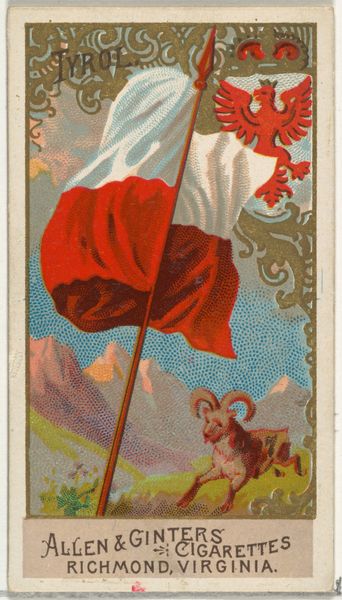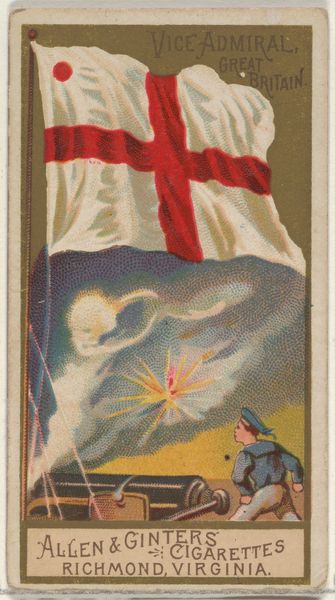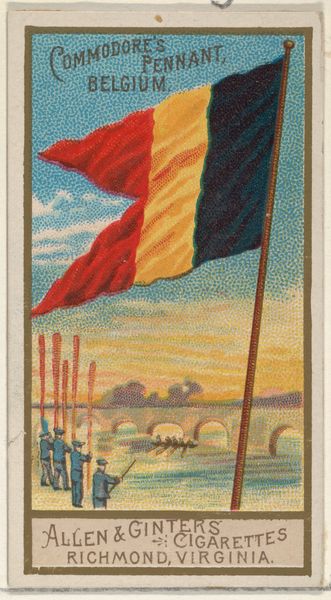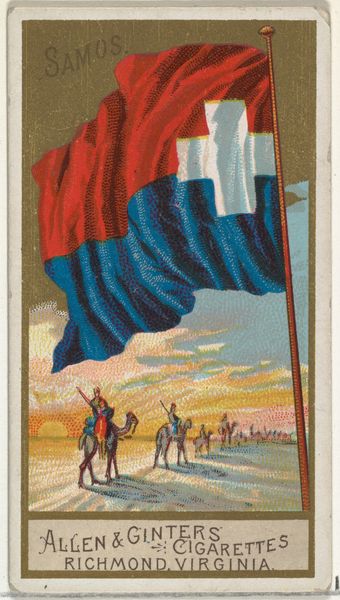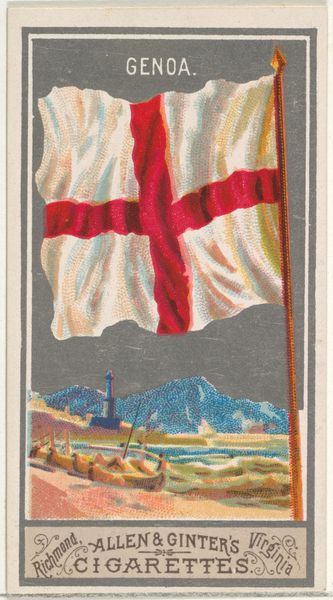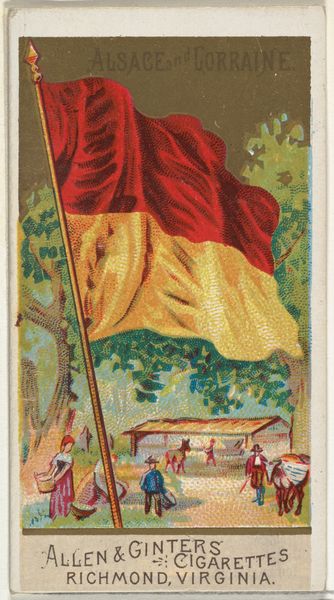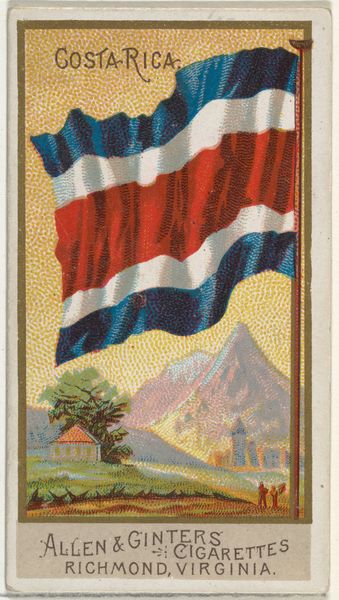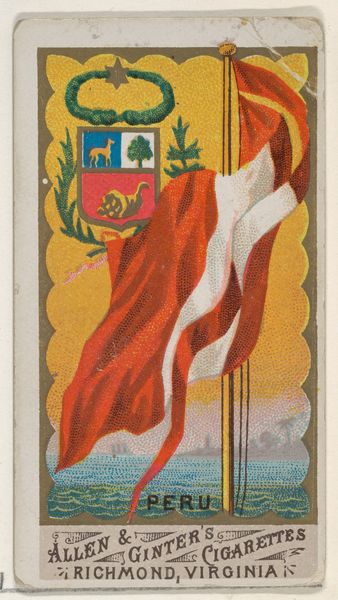
Transvaal, from Flags of All Nations, Series 2 (N10) for Allen & Ginter Cigarettes Brands 1890
0:00
0:00
drawing, print
#
drawing
# print
Dimensions: Sheet: 2 3/4 x 1 1/2 in. (7 x 3.8 cm)
Copyright: Public Domain
Editor: This is "Transvaal, from Flags of All Nations, Series 2," a print made around 1890 by Allen & Ginter. The flag's depiction is vibrant, almost heroic. It definitely captures your eye, but the setting around the flag feels underdeveloped. What do you see in this piece, considering its context as a cigarette card? Curator: It’s easy to be drawn in by the colors and crisp lines. But let's think about 1890 for a second. Cigarette cards like this served as both collectible items and tools of cultural indoctrination. What stories are they telling, and whose perspectives are being marginalized or erased? This Transvaal flag, imagine it circulating widely, romanticizing a region embroiled in conflict over land, resources, and the brutal realities of colonial power. Who benefits from these images? Editor: That's a good question, as Allen & Ginter benefitted by selling a specific lifestyle with cigarettes, and this flag promoted colonial power to consumers. Curator: Exactly. Consider how the very act of distributing these cards naturalizes imperial narratives. By aestheticizing the flag of Transvaal, we’re encouraged to engage with a simplified version of complex geopolitical tensions. How does that compare with news being presented in media today? Editor: It almost sanitizes the realities, framing conquest as... visually appealing? And I suppose that happens a lot in contemporary culture. It's all a packaged commodity, right? Curator: Precisely! Even our consumption of art isn't neutral. It requires a critical awareness of whose voices are amplified and whose are silenced. These commercial images played a role in shaping public opinion and perpetuating ideologies of domination. This cigarette card might be just a small image, but we can use it as a lens to question how power is still represented. Editor: That gives me a lot to consider! It sounds like images of domination are everywhere in history, but these processes are always worth identifying and interrogating. Curator: I’m glad to hear you see that! Always consider what perspectives might be missing.
Comments
No comments
Be the first to comment and join the conversation on the ultimate creative platform.
